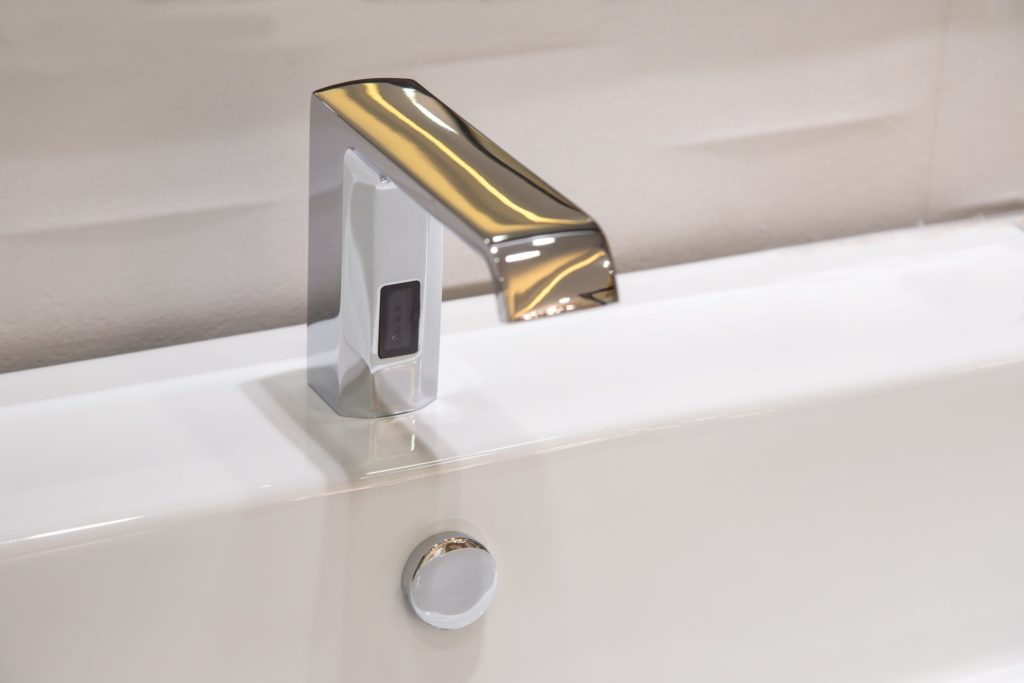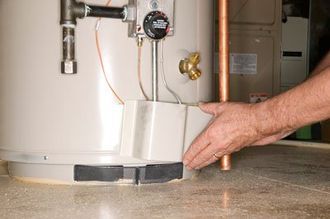They are making several good annotation regarding Eco-Friendly Plumbing Products as a whole in this post down the page.

Picking green plumbing products not only helps in reducing your environmental impact however also can boost the sustainability and effectiveness of your home. Right here's a guide to aid you browse the alternatives for more eco conscious plumbing choices.
Take into consideration the Product's Life-span
Choose pipes materials that provide sturdiness and long life. Longer-lasting materials suggest less replacements, decreased waste, and lower long-lasting ecological influence. For instance, copper and stainless-steel are both very durable and 100% recyclable, which helps reduce waste.
Check for Recycled Web Content
Select products that contain recycled content. Lots of steel plumbing items, like those made from copper and stainless-steel, usually include a significant percentage of recycled materials. PVC and PEX can additionally consist of recycled plastics, though their overall ecological impact may be greater as a result of their production and disposal procedures.
Evaluate the Production Process
Seek products produced via eco-friendly procedures. This includes materials like cast iron or copper, which can be generated with a relatively low ecological influence compared to plastics that require chemical-intensive manufacturing procedures.
Focus On Water Performance
Selecting water-efficient fixtures, such as low-flow toilets, faucets, and showerheads, is crucial. These fixtures decrease water usage, which not only reduces your water expense but likewise decreases the energy consumed in water heating and reduces the strain on sewer treatment centers.
Pick Non-Toxic Products
Stay clear of products that leach chemicals right into the water. Copper and PEX are generally non-toxic, yet it is necessary to guarantee that any type of plastic elements do not contain damaging chemicals like BPA or phthalates, specifically for alcohol consumption water lines.
Think About the Power Required for Water Home Heating
Select pipes designs and products that decrease the energy needed for heating water. Insulating your hot water pipelines and selecting effective system layouts can considerably decrease the power utilized, thus lowering your home's overall carbon footprint.
Choose Locally Sourced Materials
Utilizing in your area sourced products can lower the carbon emissions related to transportation. Additionally, supporting regional businesses aids promote a lasting regional economic situation.
Evaluate End-of-Life Disposal
Take into consideration the recyclability and biodegradability of plumbing products. Metals like copper and steel are often recyclable, while some plastics and rubbers may not be, adding to garbage dump waste. Understanding the lifecycle of the materials you pick can help in making an extra sustainable decision.
Search for Certifications
Choose items with ecological certifications. Accreditations like EPA's WaterSense, GREENGUARD, or Cradle to Cradle (C2C) indicate that items meet strict environmental criteria throughout their lifecycle.
Final thought
Selecting green plumbing products includes taking into consideration the toughness, recycled web content, manufacturing process, water and power effectiveness, poisoning, sourcing, disposal, and certifications of the products. By making educated choices, house owners can dramatically decrease their ecological influence while making certain the efficiency and durability of their pipes systems.
Eco-Friendly Plumbing: Transform Your Home with Sustainable Plumbing Options
Understanding Eco-Friendly Plumbing System
At its core, eco-friendly plumbing is all about minimizing water and energy consumption in your home. It’s a green plumbing revolution changing how we think about our water supply and energy use. It offers many options for homeowners, whether you’re upgrading your home or dealing with an older home. By making these changes, you can help the environment, save money on your water and electricity bills, and create a greener, more sustainable home. So, read on to learn how to use eco-friendly plumbing solutions today.
Low Flow Fixtures: A Key to Water Conservation
One of the cornerstones of eco friendly plumbing is the use of low-flow fixtures. These fixtures, which include faucets, showerheads, and toilets, are designed to use much less water than their traditional counterparts. For instance, low-flow showerheads use significantly less water per minute than a standard showerhead without compromising the quality of your shower.
Low-flow toilets are another excellent example of water-saving options. They use fewer gallons of water per flush, making them a more water-efficient choice. By reducing your water usage, these fixtures contribute to a greener home and substantial savings on your water bills.
Maintaining an Eco-Friendly Plumbing System
Another critical aspect of eco-friendly plumbing is addressing water leaks promptly. A small water leak can waste much water over time, leading to water damage and increased water bills.
Regularly checking your plumbing system and fixing leaks can help save gallons of water and reduce your water bills.
Tankless Water Heaters: Hot Water When You Need It
Tankless water heaters, a popular choice in eco-friendly plumbing, are a revolutionary way to heat water in your home. Unlike traditional water heaters that constantly heat a tank of water, tankless water heaters operate on an on-demand basis. This means they only use energy when you need hot water, making them a more energy-efficient option.
This innovative approach to heating water can significantly reduce the energy your home uses. Traditional water heaters constantly work to keep a water tank heated, which requires much energy. In contrast, tankless water heaters heat water when needed, reducing energy consumption and saving money on energy bills. This is a great way to make your home more eco-friendly and embrace an eco-friendly lifestyle.
Insulating Water Pipes: Maximizing Energy Efficiency
Insulating your water pipes is another effective method in eco-friendly plumbing. Proper insulation can prevent heat loss, ensuring your hot water remains hot as it travels from your water heater to your faucet or showerhead. This means your water heater won’t have to work as hard to heat the water, thus saving energy.
For instance, insulating your water pipes can further enhance energy efficiency if you’re using a tankless water heater, which heats water only when needed. This is because the insulation reduces the heat lost as the hot water travels through the pipes, meaning the heater uses less energy to bring the water to the desired temperature.
Dual Flush Toilets: A Water Saving Option
Dual flush toilets are another excellent eco-friendly plumbing option that can help you save water. These toilets offer two flush options: one for liquid waste and one for solid waste. The liquid waste option uses less water than solid waste, allowing you to choose the water flow for each flush based on your needs.
Using less water for liquid waste, dual flush toilets can save thousands of gallons per year compared to traditional bathrooms. This can lead to significant savings on your water bills and contribute to a more sustainable and eco-friendly home.
Touchless Faucets: Saving Water With a Wave of Hand
Touchless faucets are a modern, eco-friendly plumbing option that can help reduce unnecessary water use. These faucets use motion sensors to turn on and off, meaning they only use water when you need it.
This can be particularly useful in the kitchen, where your hands might be full or dirty. Instead of leaving the water running while you handle food or clean dishes, the faucet will only run when your hand comes near the sensor. This reduces water flow and helps you use less water than traditional faucets, contributing to a more eco-friendly lifestyle.
Solar Water Heaters: Harnessing the Power of the Sun
Solar water heaters are an energy-efficient and eco-friendly plumbing option that can significantly reduce your home’s energy consumption. These systems use the sun’s energy to heat water, eliminating the need for gas or electricity. This saves you money on your energy bills and reduces your home’s carbon footprint. Solar water heaters can provide long-term savings and environmental benefits despite using more energy initially for installation.
Eco-Friendly Pipes: Eco-Friendly Plumbing Options
When considering eco-friendly plumbing options, paying attention to the materials used in your plumbing system is essential. Some pipes, like those made from copper or stainless steel, are recyclable and more environmentally friendly than PVC pipes. Choosing eco-friendly materials for your pipes can reduce your home’s environmental impact and create a more sustainable plumbing system. By making these small changes, you can make a big difference in your home’s eco-friendliness.
Eco-Friendly Plumbing: Make Your Home Greener
Switching to eco-friendly plumbing options can have a significant positive impact on the environment and your wallet. Not only can these changes reduce your water and energy consumption, but they can also help prevent water waste and damage, contributing to a healthier planet.
Eco-friendly plumbing is more than just a trend; it’s a lifestyle change contributing to a more sustainable future. By making these changes in your home, you can help the planet while saving money on your water and energy bills.
Ready to Embrace a Greener Lifestyle? Contact Intown Plumbing Today!
If you’re ready to make the switch, the experienced team at Intown Plumbing is here to assist you. With various eco-friendly plumbing options available, we can guide you through making your home more sustainable, from choosing the right fixtures to installing them.
https://intownplumbingtx.com/articles/eco-friendly-plumbing/

I hope you enjoyed reading our part about What to Know About Eco-Friendly Plumbing Fixtures. Thank you so much for taking time to browse our piece. Sharing is good. You never know, you could be doing someone a favor. Thanks for going through it.
Check This Out